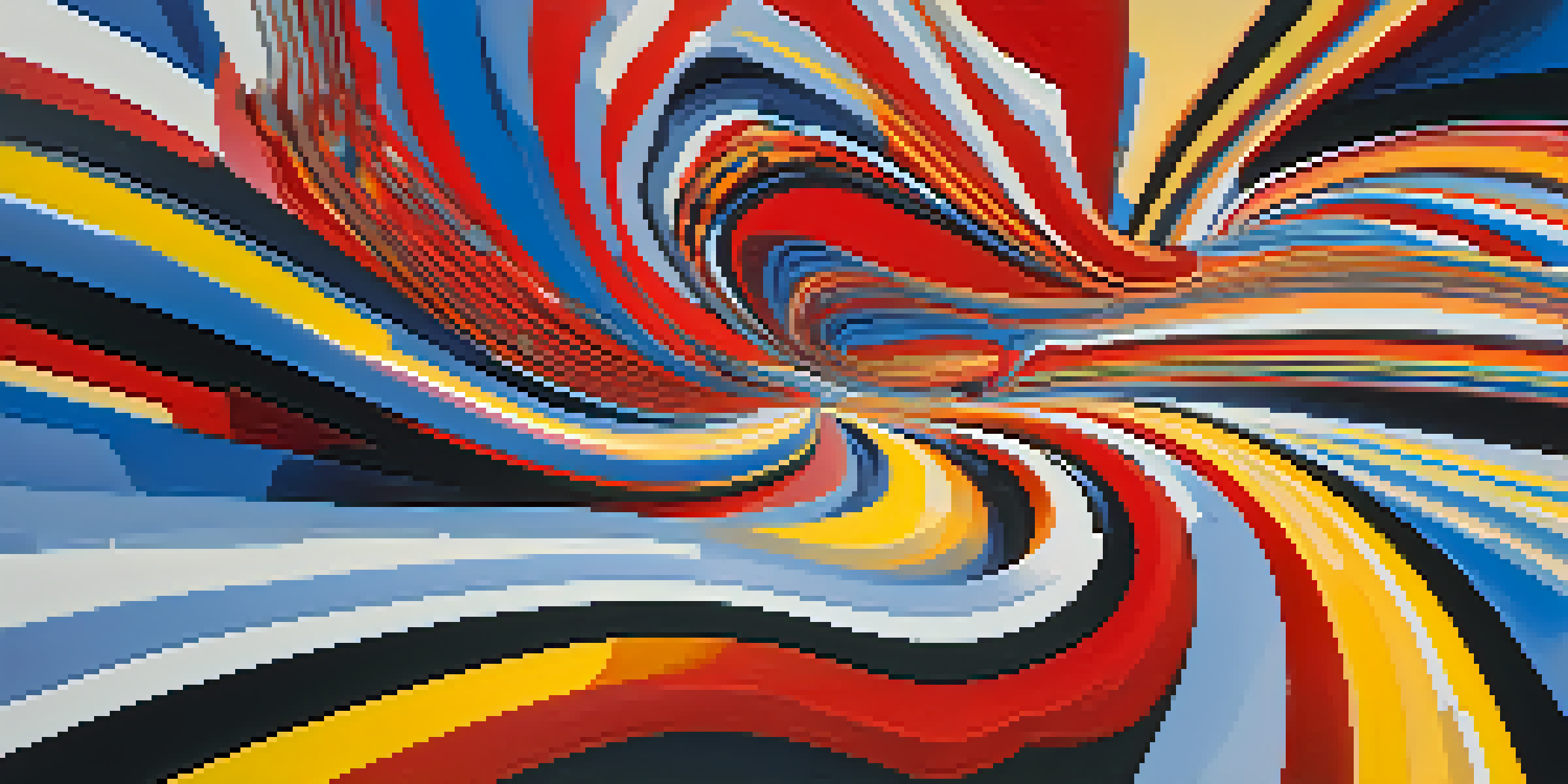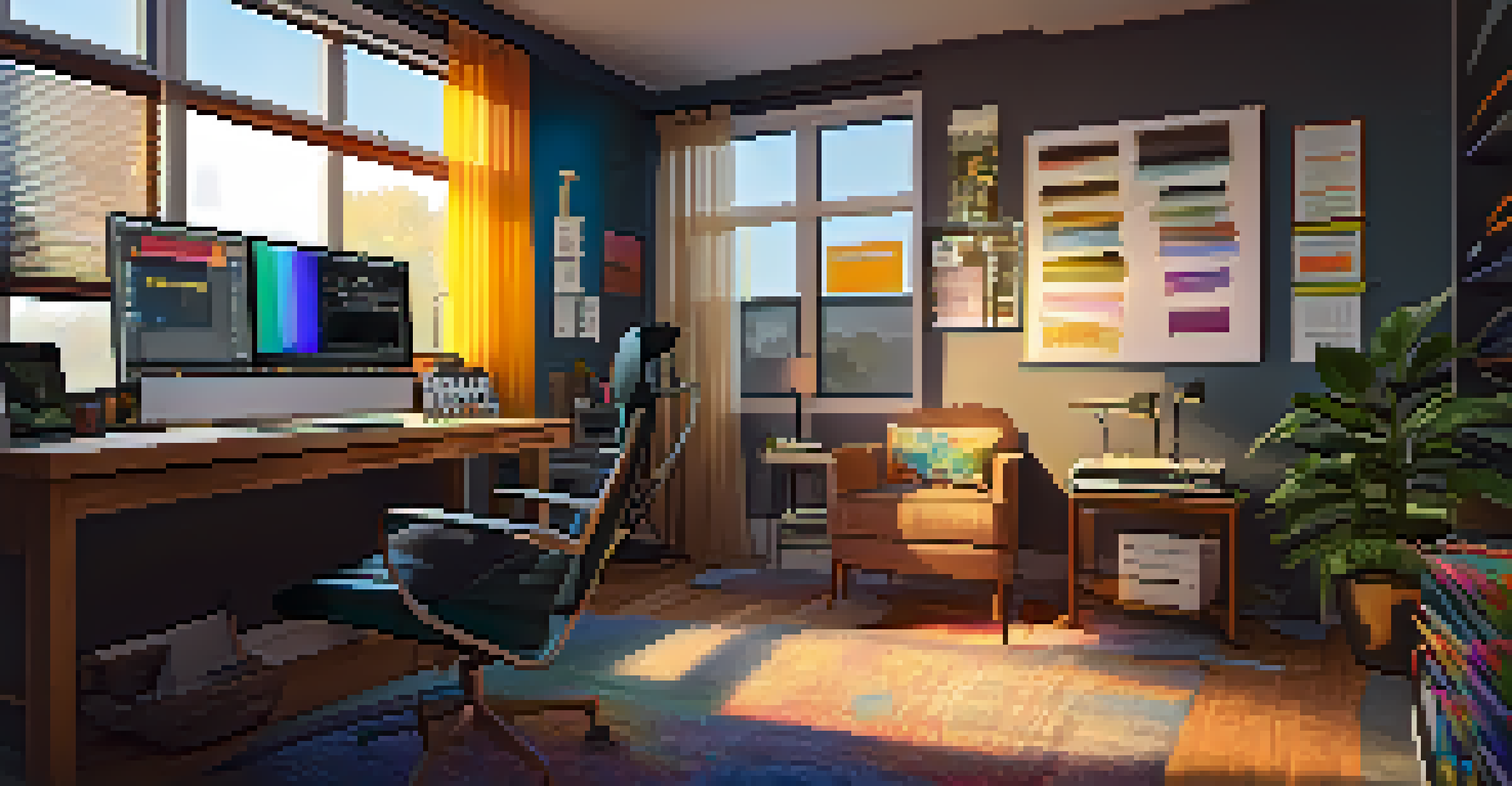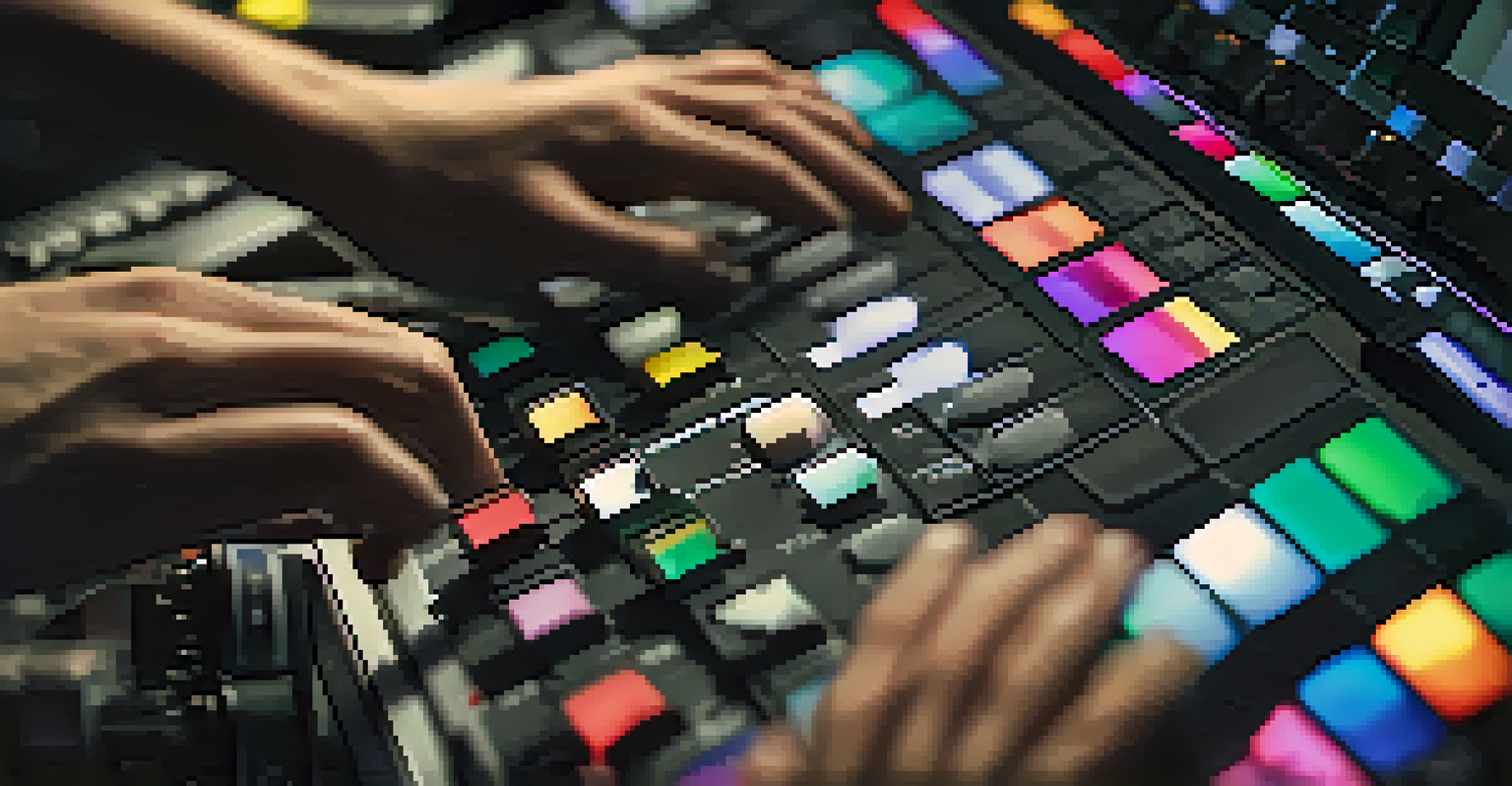The Role of Rhythm in Film Editing and Audience Engagement

Understanding Rhythm in Film Editing
Rhythm in film editing refers to the tempo and timing of cuts and transitions that create a flow in the narrative. Much like music, where rhythm dictates the pace and mood, editing rhythm influences how a story unfolds on screen. By varying the speed and timing of edits, filmmakers can evoke specific emotions and reactions from the audience, making rhythm a critical component in storytelling.
Editing is like a dance. You have to move with the rhythm of the film, aligning your cuts and transitions to the beats of the story.
For instance, a fast-paced sequence filled with quick cuts can create excitement and tension, while slower edits can enhance emotional depth or suspense. This manipulation of rhythm allows editors to guide viewer attention and create a more immersive experience. Understanding this fundamental aspect of editing can help both aspiring filmmakers and seasoned professionals craft more engaging narratives.
Ultimately, rhythm is not just about the technical aspects of editing; it’s about creating a heartbeat for the film that resonates with the audience. Just as a song can evoke memories or feelings, the rhythm of a film can leave a lasting impact on viewers, shaping their overall experience.
The Emotional Connection through Rhythm
One of the most powerful ways rhythm influences audience engagement is through emotional connection. When editors skillfully employ rhythm, they tap into viewers' feelings, making them more invested in the story. For example, a montage of bittersweet moments with a slow, steady rhythm can evoke nostalgia and empathy, inviting the audience to reflect on their own experiences.

Conversely, abrupt cuts and rapid sequences can create anxiety or excitement, pushing viewers to the edge of their seats. This emotional manipulation through rhythm is crucial in genres such as thrillers or romantic dramas, where the audience’s feelings directly impact their overall enjoyment of the film. By aligning rhythm with emotional beats, filmmakers can create a resonant narrative that lingers long after the credits roll.
Rhythm Shapes Emotional Engagement
Skillful use of rhythm in editing enhances audience emotions, making them more invested in the film's narrative.
Moreover, rhythm can also serve as a narrative device, enhancing storytelling elements. For instance, the rhythm of dialogue delivery can affect how a scene is perceived; a well-timed pause can amplify tension, while a quick back-and-forth can inject humor. This dynamic interplay between rhythm and emotion enriches the viewer's experience, making them feel like an active participant in the story.
Cultural Influence of Rhythm in Film
Rhythm is not just a technical aspect of film editing; it is also deeply rooted in cultural contexts. Different cultures have unique approaches to rhythm in film, influenced by their musical traditions, storytelling techniques, and societal norms. For instance, the rhythmic editing in Bollywood films often mirrors the lively beats of Indian music, creating a vibrant and engaging viewing experience.
The rhythm of a film is its heartbeat; it keeps the audience engaged and emotionally invested.
On the other hand, European cinema might favor a more subdued rhythm, focusing on longer takes and deeper character exploration. This cultural variation in rhythm helps to shape the audience's expectations and interpretations of the film. As viewers, we often respond intuitively to these rhythms, even if we don’t consciously recognize them.
Understanding these cultural nuances can enhance our appreciation of global cinema. By recognizing how rhythm reflects cultural storytelling styles, we can better engage with films from different backgrounds and broaden our cinematic horizons. This appreciation not only enriches our viewing experience but also fosters a deeper connection to the diverse narratives expressed through film.
The Technical Aspects of Rhythm in Editing
From a technical standpoint, rhythm in film editing involves various tools and techniques that editors use to create a desired flow. Key factors include shot duration, pacing, and the juxtaposition of visuals and sounds. Each of these elements plays a role in establishing a film's rhythm, guiding how viewers perceive the narrative.
For example, editors might use rhythm through the strategic placement of sound effects and music to complement visual cuts. A well-timed musical cue can enhance the emotional weight of a scene, while the absence of sound might heighten tension. This synergy between sound and visual rhythm is essential for maintaining audience engagement throughout the film.
Cultural Context Influences Rhythm
Different cultures bring unique rhythmic styles to film editing, affecting how stories are perceived and enjoyed.
Ultimately, mastering these technical aspects requires practice and a keen understanding of the story being told. Editors must balance creativity with technical skills, ensuring that every cut contributes to the overall rhythm of the film. This careful orchestration not only enhances the film's narrative but also ensures that viewers remain captivated from start to finish.
Rhythm and Pacing: The Dance of Editing
Pacing is the heartbeat of a film, and it is closely tied to rhythm in editing. While rhythm focuses on the timing of cuts, pacing refers to the overall speed at which the story unfolds. Editors must find the perfect balance between these elements to maintain audience interest and convey the intended message effectively.
For example, an action-packed sequence may require rapid pacing to keep adrenaline pumping, while a heartfelt scene might benefit from a slower pace to allow emotions to resonate. Achieving this balance is akin to a dance, where every step must be intentional and in sync with the music of the film's narrative. Editors often use pacing as a tool to build tension or release it at just the right moment.
This dance between rhythm and pacing ensures that viewers remain engaged throughout the film. When done effectively, it can create a seamless experience that feels natural and immersive. By paying attention to this dynamic relationship, filmmakers can craft stories that not only entertain but also leave a lasting impact on their audience.
The Impact of Rhythm on Audience Retention
Audience retention is crucial for filmmakers, and rhythm plays a significant role in keeping viewers glued to their seats. A well-edited film with a compelling rhythm can captivate viewers, making them less likely to check their phones or lose focus. The right rhythm creates an engaging experience that encourages audiences to become emotionally invested in the story.
For instance, films with a consistent rhythmic structure often lead to better audience retention, as viewers become accustomed to the pacing. This familiarity allows them to anticipate emotional beats, enhancing their connection to the characters and plot. In contrast, uneven rhythms can disrupt viewer engagement, leading to confusion or disinterest.
Tech Advances Transform Editing Rhythm
Emerging technologies are reshaping film editing, allowing for innovative rhythmic patterns and storytelling approaches.
Ultimately, understanding the impact of rhythm on audience retention is essential for filmmakers. By focusing on creating a rhythmic experience, editors can ensure that viewers remain engaged throughout the film, enhancing both enjoyment and emotional connection. This focus on rhythm can lead to a more memorable viewing experience, encouraging audiences to return for repeat viewings.
Future Trends in Rhythm and Film Editing
As technology evolves, so does the art of film editing, particularly in relation to rhythm. New tools and techniques are emerging that allow editors to experiment with rhythm in innovative ways. For example, advancements in AI-driven editing software offer unique ways to analyze and adjust rhythmic patterns, giving editors greater creative freedom.
Additionally, the rise of streaming platforms has changed how audiences consume films, leading to new editing trends. With binge-watching becoming the norm, editors are often tasked with creating a rhythm that keeps viewers engaged across multiple episodes. This shift presents exciting challenges and opportunities for filmmakers to explore rhythm in storytelling.

Looking ahead, it’s clear that rhythm will continue to evolve as filmmakers adapt to changing audience preferences and technological advancements. By embracing these trends, editors can push the boundaries of traditional film editing, creating fresh and engaging experiences that resonate with viewers. The future of rhythm in film editing is bright, paving the way for innovative storytelling methods.